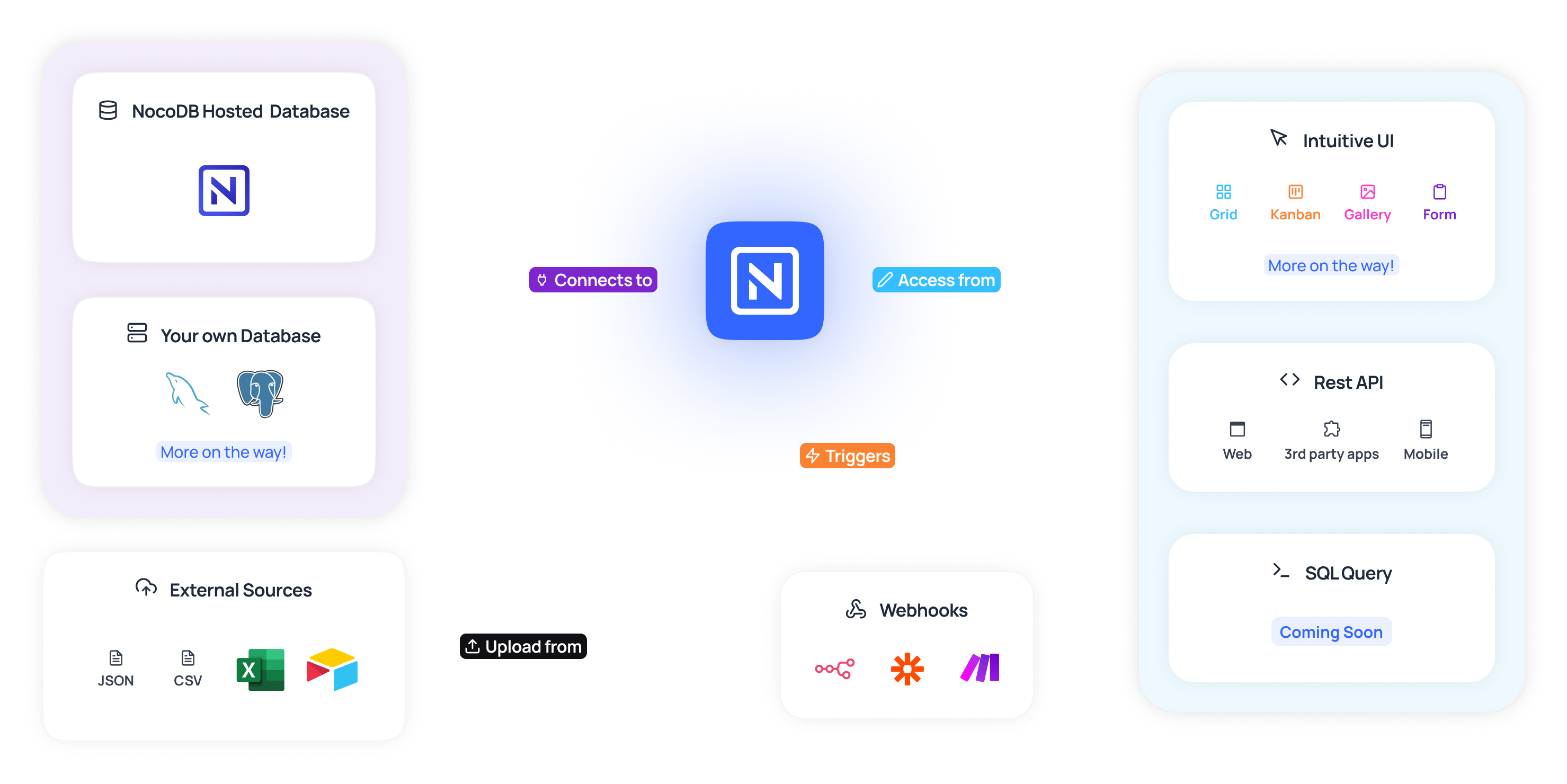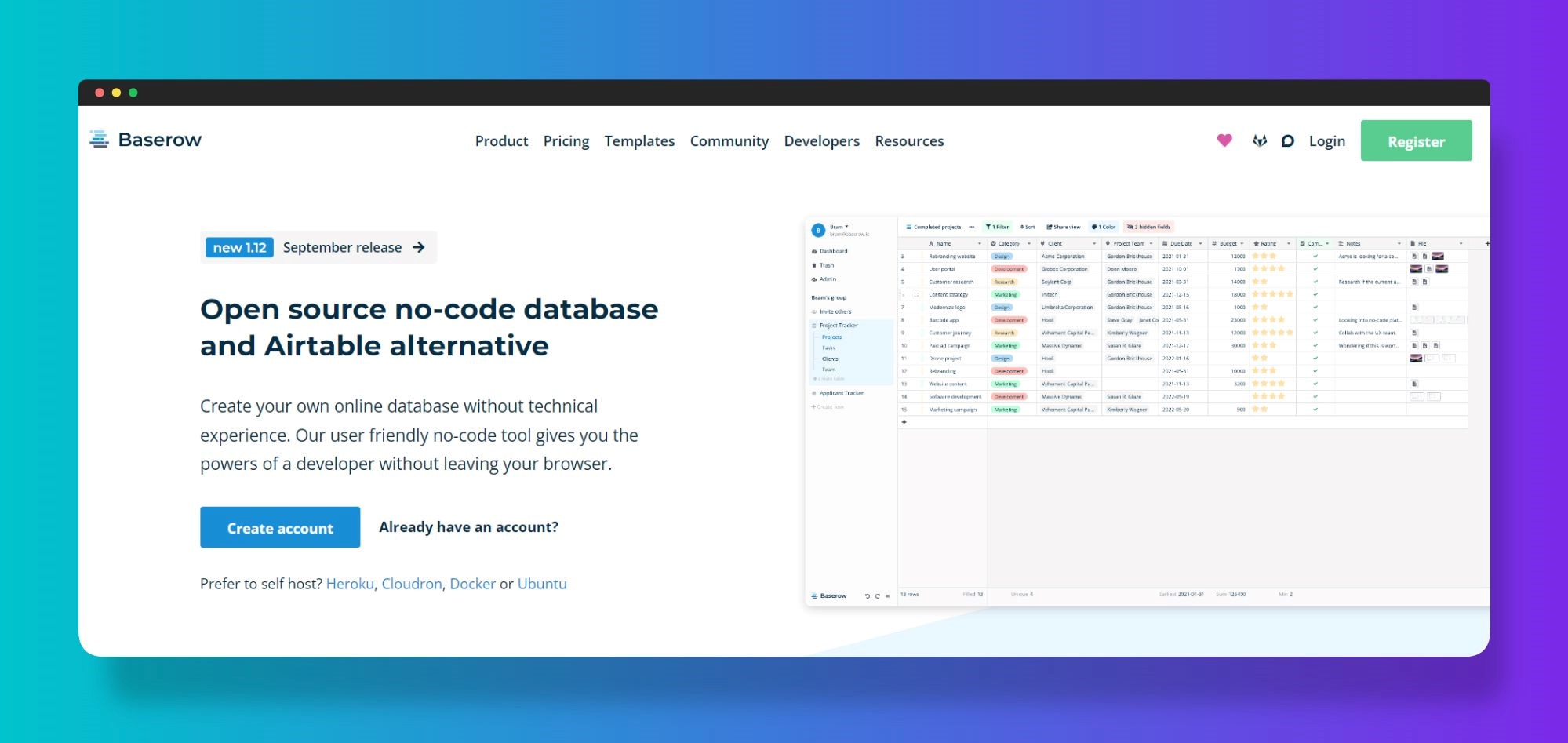Why No-Code is the Future of Open Platform Database Creation for Businesses
Why No-Code is the Future of Open Platform Database Creation for Businesses
Blog Article
A Comprehensive Overview to Implementing Scalable Databases Without the Need for Coding Expertise
In the modern landscape of information administration, the ability to implement scalable data sources without coding proficiency is becoming significantly necessary for organizations of all sizes. What are the essential aspects that can truly empower these individuals to leverage scalable data sources effectively?
Understanding Scalable Data Sources
In the realm of modern data monitoring, scalable data sources have become an important option for companies looking for to manage enhancing quantities of information effectively. These data sources are created to suit growth by permitting for the smooth addition of sources, whether via straight scaling (adding more equipments) or vertical scaling (updating existing devices) This adaptability is necessary in today's hectic electronic landscape, where data is generated at an unprecedented price.
Scalable databases generally make use of dispersed architectures, which allow data to be spread out across numerous nodes. This distribution not only boosts efficiency but additionally gives redundancy, making certain data accessibility also in the event of hardware failures. Scalability can be an essential factor for different applications, including e-commerce platforms, social networks networks, and large information analytics, where customer need can fluctuate considerably.
Moreover, scalable data sources usually include robust data consistency models that balance efficiency and dependability. Organizations has to consider their particular demands, such as read and compose rates, information honesty, and mistake tolerance when choosing a scalable database service. Eventually, recognizing the underlying concepts of scalable databases is necessary for organizations intending to prosper in a significantly data-driven globe.
Trick Attributes to Seek
When evaluating scalable data sources, several essential functions are paramount to ensuring ideal performance and reliability. Take into consideration the style of the data source. A dispersed style can boost scalability by allowing information to be stored across several nodes, promoting seamless information gain access to and handling as need rises.
One more essential feature is data dividing, which allows efficient management of large datasets by dividing them right into smaller, more convenient pieces (no-code). This strategy not only boosts performance yet likewise simplifies source allocation
In addition, search for durable replication capacities. This feature makes certain data redundancy and high schedule, reducing downtime throughout maintenance or unanticipated failures.
Efficiency monitoring devices are also crucial, as they supply real-time insights into system wellness and operational efficiency, enabling timely adjustments to keep optimal efficiency.

User-Friendly Database Equipment
Simpleness is an important element in the layout of straightforward database tools, as it enhances access for individuals with varying levels of technological knowledge. no-code. These devices prioritize intuitive interfaces, enabling users to produce, handle, wikipedia reference and query data sources without requiring extensive programs knowledge
Trick features typically consist of drag-and-drop functionality, visual information modeling, and pre-built design templates that streamline the configuration process. Such tools often use directed tutorials or onboarding processes that assist in customer involvement and minimize the learning curve. Additionally, seamless assimilation with popular data resources and services makes sure that customers can easily import and export information, better simplifying procedures.

In addition, robust assistance and area sources, such as discussion forums and paperwork, improve the individual experience by providing support when needed. Generally, straightforward data source tools equip organizations to harness the power of scalable databases, making information monitoring available to everybody included.
Step-by-Step Application Guide
Exactly how can companies effectively apply scalable databases to meet their expanding information needs? The procedure begins with identifying particular data demands, consisting of the volume, variety, and rate of information that will be refined. Next off, organizations ought to evaluate user-friendly database tools that offer scalability attributes, such as cloud-based solutions or managed data source services.
When the appropriate tool sites is chosen, the following action involves setting up the data source atmosphere. This consists of setting up circumstances, specifying user authorizations, and developing data structures that line up with business goals. Organizations needs to then move existing information into the new system, ensuring information honesty and very little disruption to procedures.
Post-migration, carrying out complete screening is vital; this consists of performance screening under various tons conditions to guarantee the system can deal with future development - no-code. Furthermore, it is crucial to train team on the database monitoring user interface to facilitate seamless usage
Finest Practices for Administration
Reliable administration of scalable databases needs a critical strategy that prioritizes ongoing monitoring and optimization. To achieve this, organizations ought to apply robust surveillance devices that provide real-time understandings right into data source performance metrics, such as question response times, resource use, and purchase throughput. Frequently assessing these metrics can assist determine traffic jams and locations for enhancement.

Routine backups and catastrophe recovery strategies are necessary to safeguard information honesty and accessibility. Developing why not try here a routine for checking these back-ups will make sure a reliable recuperation process in situation of an unexpected failure.
Additionally, efficiency adjusting ought to be a continuous procedure. Adjusting indexing strategies, maximizing inquiries, and scaling resourcesâEUR" whether vertically or horizontallyâEUR" will aid keep optimum performance as use demands develop.
Last but not least, cultivating a society of understanding sharing among staff member will allow continuous discovering and adaptation, making sure that the monitoring of scalable databases stays reliable and effective over time.
Final Thought
In conclusion, the application of scalable data sources can be effectively accomplished without coding knowledge via the usage of instinctive interfaces and straightforward tools. By sticking to the laid out techniques for arrangement, data movement, and performance screening, people can browse the intricacies of data source management effortlessly. Highlighting finest methods for continuous upkeep and cooperation more boosts the capacity to take care of scalable data sources successfully in a swiftly advancing data-driven setting.
In the modern landscape of information management, the ability to execute scalable databases without coding competence is coming to be significantly important for organizations of all sizes.In the realm of contemporary information monitoring, scalable data sources have emerged as a vital option for companies seeking to manage raising quantities of details successfully.Additionally, scalable data sources usually include durable data consistency models that balance performance and dependability.How can companies effectively implement scalable data sources to fulfill their expanding information needs? Next, organizations must examine easy to use database tools that supply scalability functions, such as cloud-based options or handled database solutions.
Report this page